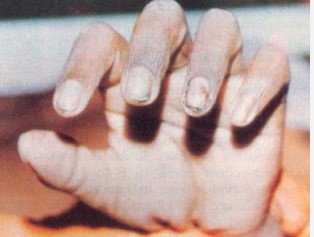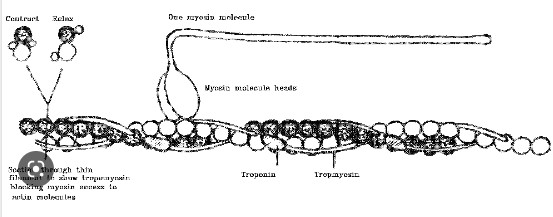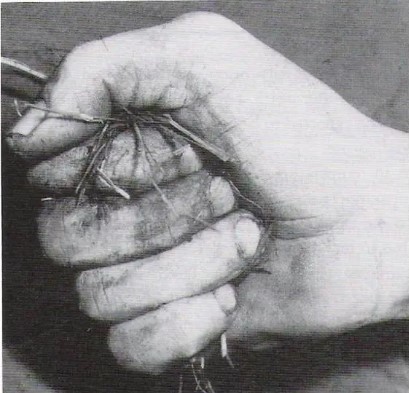Rigor mortis and cadaveric spasm are two phenomena that occur after death, often discussed in forensic investigations. Each presents unique characteristics that help experts determine crucial information about the time and circumstances of death. Although they are related to the body’s post-mortem changes, their occurrences are influenced by different factors and have distinct forensic implications.
Rigor mortis is a post-mortem condition where the muscles of the deceased stiffen due to chemical changes within the muscle tissues, typically commencing within 2 to 6 hours after death. It follows a predictable pattern and can last up to 72 hours. In contrast, cadaveric spasm occurs almost instantaneously at the moment of death and is characterized by the sudden stiffening of muscles, often caused by intense activity or strong emotions experienced by the individual at the time of death.
These conditions not only help in estimating the time of death but also provide insights into the events leading up to it. The understanding of rigor mortis and cadaveric spasm is crucial for forensic scientists and legal experts as they piece together the circumstances surrounding a death.

Rigor Mortis Overview
Definition and Science
Rigor mortis, often described simply as post-mortem rigidity, is a natural process that occurs in the muscles of the deceased. This phenomenon results from biochemical changes in the muscle tissues, primarily involving the calcium ions and adenosine triphosphate (ATP), the energy currency of the cell. After death, the body ceases ATP production, leading to a state where the muscles can no longer relax, causing them to stiffen.
Stages of Development
The development of rigor mortis follows a predictable pattern:
- Initial Flaccidity: Immediately after death, the muscles are relaxed and soft.
- Onset of Rigidity: Rigor mortis begins within 2 to 6 hours post-mortem, usually manifesting in the smaller muscles such as the jaw and face.
- Full Rigidity: The state reaches its peak at about 12 hours when all major muscle groups, including limbs, are stiff.
- Resolution of Rigidity: After approximately 24 to 48 hours, the body gradually returns to a softened state as the muscles decompose.
Factors Influencing Timing
Several factors can alter the timing and progression of rigor mortis:
- Ambient Temperature: Warmer conditions accelerate the onset, while colder environments may delay it.
- Physical Activity Before Death: High activity levels may hasten onset due to depletion of ATP.
- Body Weight and Size: Smaller bodies generally exhibit quicker onset and progression.
- Illness: Certain diseases can affect muscle chemistry and influence rigor mortis.

Cadaveric Spasm Overview
Definition and Causes
A cadaveric spasm, also known as instantaneous rigor, is a rare condition characterized by the sudden stiffening of muscles at the moment of death. Unlike rigor mortis, which is a gradual process, a cadaveric spasm is thought to be caused by a massive release of adrenaline in the nervous system, often triggered by violent deaths involving extreme physical or emotional stress.
Typical Occurrences
Cadaveric spasms are most frequently observed in:
- Violent Deaths: Such as those involving intense combat or personal defense.
- Drownings: Where individuals might grasp tightly at objects or substrate in a final reflex.
- Suicides: Particularly in cases involving firearms or poisons.
Distinguishing Features
The primary distinguishing feature of a cadaveric spasm is its selectivity in muscle involvement. It typically affects muscles that were actively engaged at the time of death, providing a snapshot of the body’s final moments.

Comparative Analysis
Onset Timing
- Rigor Mortis: Begins 2 to 6 hours post-mortem.
- Cadaveric Spasm: Occurs almost immediately at the moment of death.
Affected Muscles
- Rigor Mortis: Eventually affects all muscle groups.
- Cadaveric Spasm: Involves only muscles that were active or stressed at the time of death.
Duration and Resolution
- Rigor Mortis: Lasts up to 48-72 hours before dissipating as decomposition sets in.
- Cadaveric Spasm: Remains until overridden by the processes of rigor mortis.
Environmental Impact
Both phenomena can be influenced by environmental factors, but the impact is more pronounced with rigor mortis. Temperature, humidity, and the body’s condition can significantly alter the timeline and characteristics of rigor development. In contrast, cadaveric spasm is less affected by the environment and more by the circumstances and manner of death.

Forensic Relevance
Role in Time of Death Estimation
Determining the time of death is a critical component of forensic investigations, and both rigor mortis and cadaveric spasm serve as vital indicators for forensic experts. Rigor mortis follows a predictable pattern and timeline, which can help pinpoint the time of death within a range of hours. For instance:
- If a body exhibits full rigidity, investigators can estimate death occurred approximately 12-24 hours earlier.
- A body completely lacking rigor suggests a post-mortem interval of less than two hours or more than 48 hours.
Cadaveric spasm, while less common, provides unique clues when present. Its occurrence suggests a sudden and often violent death, locking the muscles in their last action. This can be particularly revealing in cases of drowning or self-defense, helping to reconstruct the final moments before death.
Case Studies and Examples
Case Study 1: In a noted case, the position of a cadaveric spasm in a drowning victim’s hands, clutching tightly to weeds, assisted authorities in confirming the body had not been moved post-mortem. This was crucial in classifying the death as accidental.
Case Study 2: Rigor mortis was pivotal in a murder investigation where the estimated time of death was challenged in court. The victim’s body showed partial rigor, aligning with the prosecutor’s timeline that the murder occurred several hours before the body was discovered, contradicting the defendant’s alibi.
These examples illustrate how rigor mortis and cadaveric spasm can be instrumental in legal contexts, providing evidence that supports or contradicts witness statements and suspect alibis.
Misinterpretations in Investigations
Misinterpretations of rigor mortis and cadaveric spasm can lead to significant errors in criminal investigations. For example:
- Rigor Misinterpreted: A body discovered in an advanced state of rigor could be mistakenly judged to have died much earlier than actual, affecting the suspect pool.
- Environmental Effects: Ignoring environmental factors like temperature can skew rigor mortis timelines. A cold environment might preserve rigor, suggesting a more recent death than factual.
Frequently Asked Questions
What Triggers Rigor Mortis?
Rigor mortis is triggered by the cessation of ATP production, which is necessary for muscle relaxation. After death, the body depletes its stores of ATP, causing the muscles to stiffen.
How Long Does Cadaveric Spasm Last?
Cadaveric spasm can last until the onset of rigor mortis, which then overpowers the spasm. This duration varies but is generally shorter than the full process of rigor mortis.
Can Both Phenomena Affect the Same Body?
Yes, both phenomena can occur in the same body. Cadaveric spasm might affect specific muscles or groups, while rigor mortis generally follows, affecting the entire body.
How Are These Conditions Useful in Forensic Science?
They are crucial for determining the time of death and understanding the circumstances leading up to it. Patterns of these phenomena can indicate whether the death was peaceful or occurred under distress.
Conclusion
Rigor mortis and cadaveric spasm are essential tools in forensic science, aiding in the determination of not just the time of death but also the circumstances surrounding it. Their distinct characteristics and timelines provide critical data that can support or refute narratives constructed during criminal investigations.
Understanding these post-mortem changes enhances the accuracy of forensic analysis and the judicial process, ultimately contributing to the delivery of justice. As forensic techniques advance, the interpretation of rigor mortis and cadaveric spasm continues to refine, offering deeper insights into the silent testimonies of the deceased.
